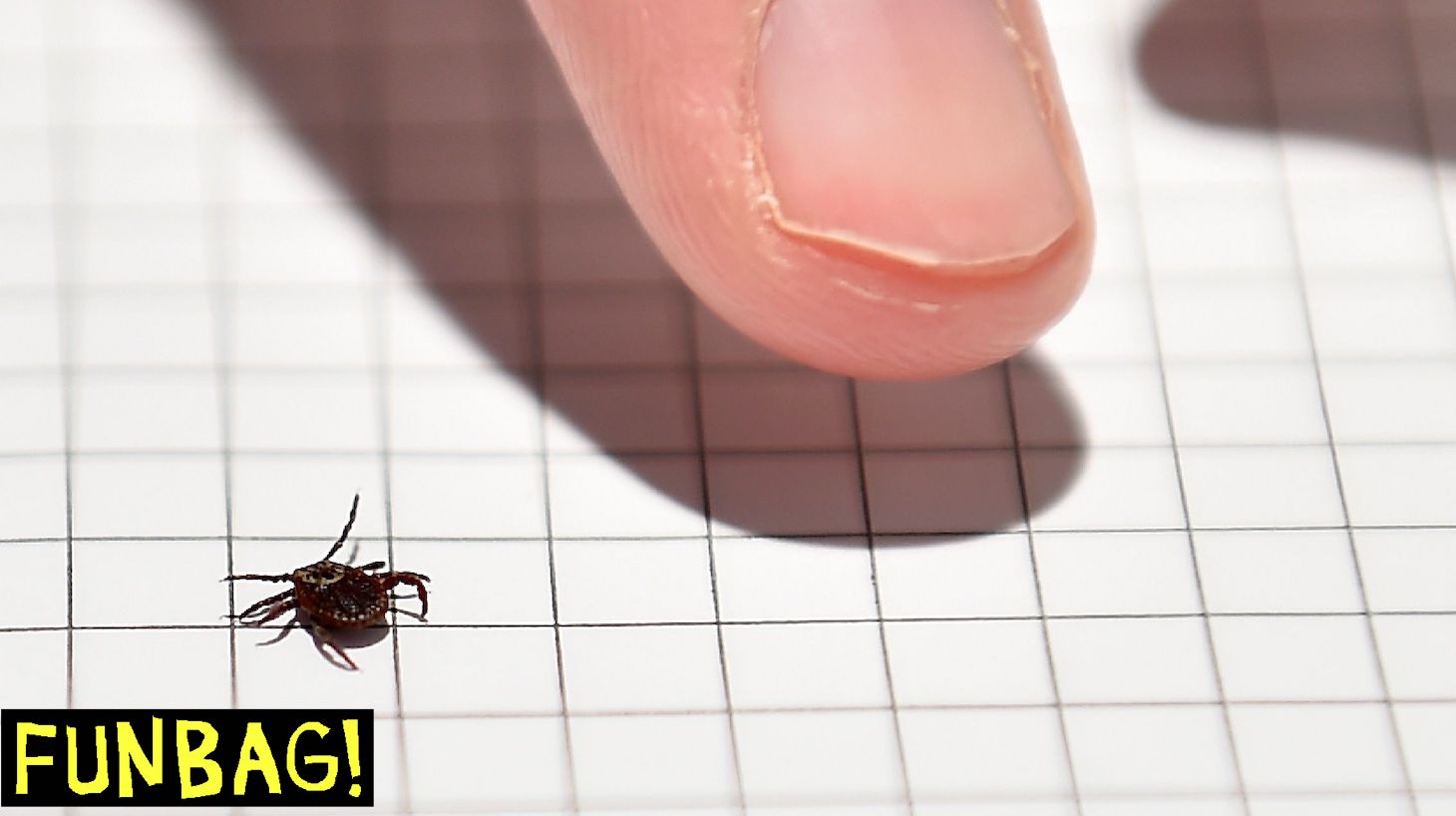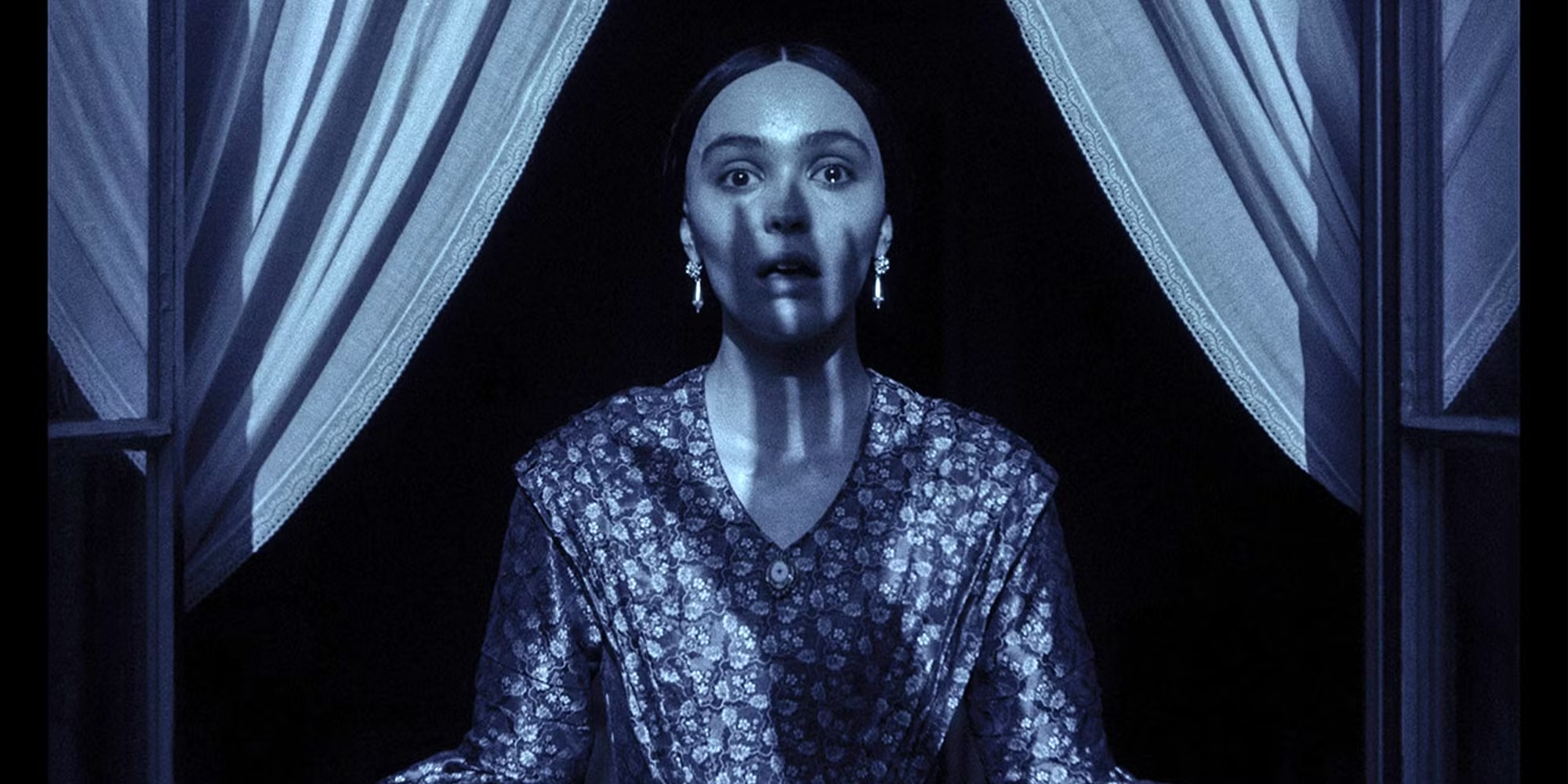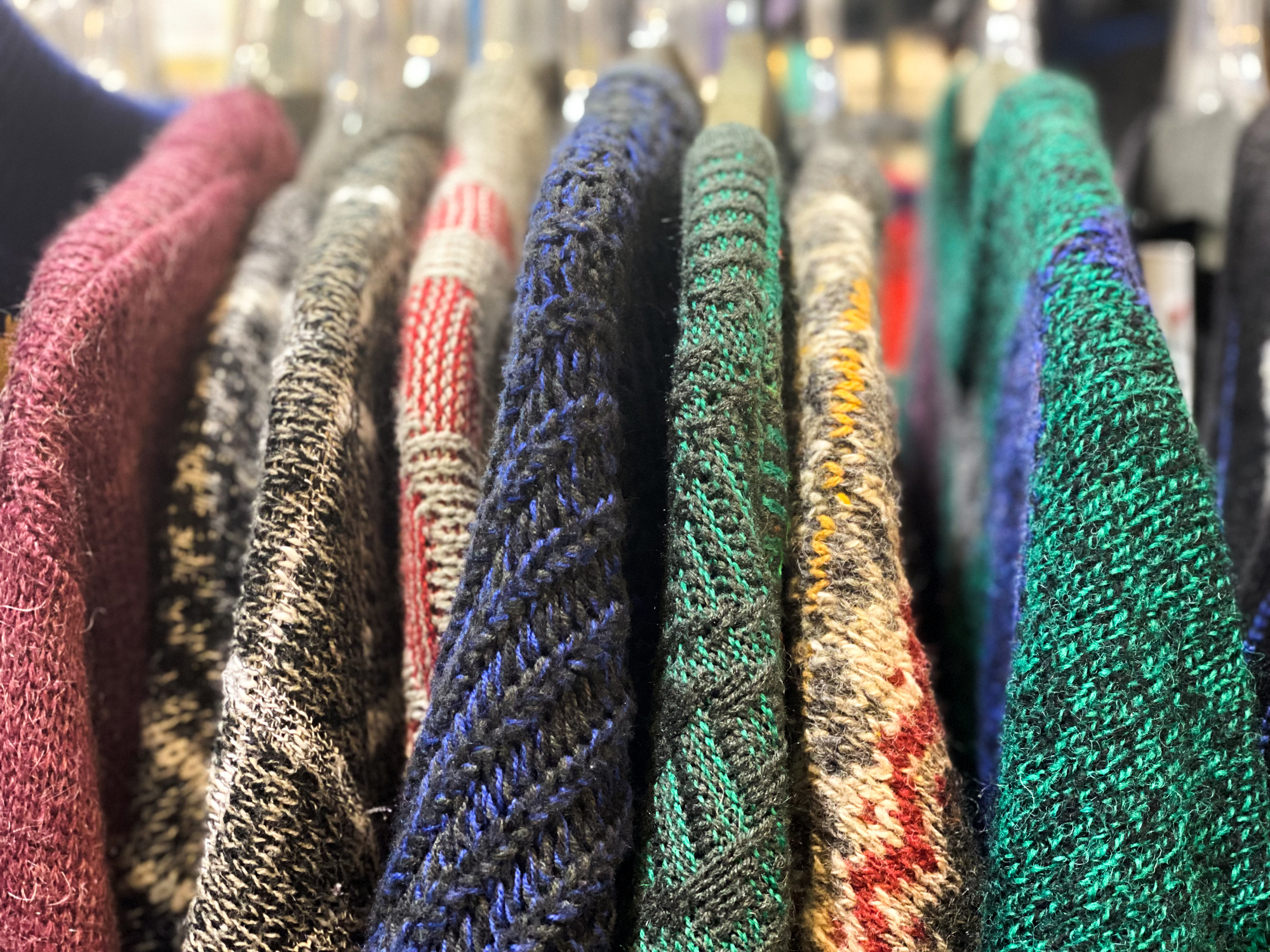Time for your weekly edition of the Defector Funbag. Drew’s off this week. Got something on your mind? Email the Funbag. And buy Drew’s book, The Night The Lights Went Out, while you’re at it. Today, we’re talking about poop euphemisms, ear shapes, banana ads, and more.
Hello readers, it is Sabrina, Defector’s resident little guy on the little guy beat and longtime ally to the sports community. It’s a real honor to fill Drew’s shoes this week as Funbag sage, and one I do not take lightly. There are lots of weird little guys crawling around this planet, and it’s a noble quest to try to answer their emailed questions.
Thanks to all the people who submitted questions about bugs and frogs—I promise I will write about different kinds of animals in the future, and I’m open to taking creature requests (simbler@defector.com). To everyone who asked a creature question expecting actual knowledge or wisdom, I’m sorry. To everyone who asked a question expecting a loosely assembled but staunch opinion, today’s your day. The world’s our oyster, and we are but a pea crab making a home inside the shell.
On to your questions:
Dan:
Despite your love for all critters...even you have to despise ticks, right? Blood sucking, disease spreading things. The only benefit I can see from their existence is that I have used the phrase "Dug in like a tick" on more than one occasion.
I should clarify that while I respect all creatures—we’re all out here trying to make a living on what is, for many of us, an increasingly inhospitable hunk of rock—I do not love them all, especially not ticks. I try to take my cues about whether to love creatures based on the people who study and work with them, because a lot of oft-despised creatures could simply use some good PR. But tick researchers are just as invested as I am in creating some distance between us and ticks, focusing on the prevention of tick-borne diseases such as Lyme. It’s a delicate line to walk between appreciating the biology of a creature while also seeking to eradicate it, but scientists manage to do it.
There are some aspects of tick biology that I find super cool. Can you imagine doubling or tripling your body size after eating? That’s incredible!! Sometimes after I eat half a watermelon, I’m confused why my body hasn’t grown more. Where did it all go? There are also some aspects of tick biology that horrify me. Take, for example, this paper explaining the feeding apparatus of the castor bean tick Ixodes ricinus, which explains the tick’s chelicerae pierces the skin and generates a “toehold” (tick toes???) only to be followed by a “a breaststroke-like motion” to “pulls in the barbed hypostome.” I simply do not want to imagine a tick breaststroking on my skin.
There are some things about a tick that, while completely unrelated to the threat they pose to me and my pets, I still despise. For example, when I see a tick identification guide with all the ticks arranged in a row with their top legs splayed out in a gesture uncannily like beckoning—what I assume is the natural resting state of a tick—the ticks look like wily circus men inviting me to see their show. Specifically, they remind me of Hugh Jackman in the trailer for The Greatest Showman, a movie I did not see but affixed itself in my memory, apparently. Give a tick a tiny top hat and there would be no difference whatsoever between the two.
Here’s the thing. If an animal is trying to ruin my life, I think it’s fair game to despise it. This does not apply to animals that I have provoked; if I were to bother a bear or irritate a hippo, I simply could not blame them even as they devoured me. But I do absolutely nothing to ticks and yet they still try to crawl up my pants and use their terrible mouth-scissors to cut a hole in my skin. Last spring in the beautiful woodlands of upstate New York I saw a tick crawling up my corduroys. Moments later, with the help of a friend, I burned that tick alive. I did feel a wave of guilt pass over me—it seemed a tad cruel, even for a tick—but that guilt was soon replaced by serenity, the absolute calm that comes from watching something that wanted your blood scorched into ash on the concrete.
Happy summer, and don’t forget to check your crevices!!
Pete:
Glad you are here now. You are very Good. OK anyways so what is the ONE thing you always wanted to cover at NYT or wherever that you were like “OK sweet now I can finally write [____]” when you got hired at Defector?
I have two answers to this question, and I will give the smaller, safer one, which is poop. I did write a lot about poop at The New York Times, which was a great deal of fun. But I always encountered the same issue, which is that you cannot say “poop” or any of its derivatives (poo, pooed, pooer, poo-poo) in The New York Times. The same goes for “pee”; only “urine” is allowed. This leads to ornate and often mangled write-around, where you must try to communicate that you are talking about poop without actually saying poop, such as “mounds of stools” and “heaps of rotting waste” and the tried and true “carry out your business.” All this paraphrasing can certainly be fun and add to the winking nature of a story, but if you are writing a story that is entirely about poop it can feel very silly to not be able to say poop! Of course, you could also say “excrement” but when has the word “excrement” ever entered a sentence without becoming a huge, anticlimactic downer? There’s no other word that takes the wind right out of a sentence more than “excrement.”
Matt:
What's your favorite euphemism for "I need to take a poop" ?
Please excuse me while I go squat and free my mound of stools.
Jack:
Why do ears have so many nooks and crannies and flanges and what all in them? (Not to mention, why do some people’s ears stick way out, but other’s sit tight by their head?)
In general I would say they are the weirdest part of the human body because they vary so much more from one person to another, but for some reason people pay way less attention to them than, say, the shape of someone’s nose, even though nose shapes are much more regular than ear shapes.
Why is that?
Jack, this is a great question about two of the body’s most underrated holes—ears, and nostrils, for that matter, get none of the love other holes do. I say this as no ear expert, but as a longtime ear fan.
A very, very brief explanation: Our ears collect and magnify incoming sound waves and funnel them inside our head, where our middle and inner ears transform those waves into signals our brain can interpret, according to this explainer in Science News for Students.
I assume you’re also talking about the outer ear, our fleshy pierogis that everyone else can see. The outer flap of our ear is a skin flap shaped to gather sound from what’s in front of us, as opposed to what’s behind us, according to this Wall Street Journal ear explainer. All the little folds and pleats in our outer ear are called the pinnae, and they help collect, amplify, and funnel those sound waves. Any more detail on how, exactly the pinnae modify sound waves is sadly outside my powers of explanation.
But I will say that my favorite part of the ear is not the part that other people can see. When the ear extends through the chute of our ear canal and into the unseen regions of the middle and inner ear, that’s when shapes get even more weird. The middle ear is where our tiny bony ossicles hang out, along with another canal called the Eustachian tube that is apparently lined with mucus (fun!) and then the inner ear has our vestibule and semicircular canals, which help us balance, as well as my absolute favorite part of the ear: the cochlea. The spiral shape of the cochlea is somewhat of a mystery—it might be coiled to save space or to boost low frequency sounds—but what is not mysterious is the fact that it looks exactly like a tiny snail, and thinking about the two tiny snails inside my head that help me hear makes me smile from cochlea to cochlea.
It’s also true that ear shapes vary a lot between different people. Frankly, I think they should vary more. There are so many non-human animals whose ears I envy. Bats have cavernous, doorway-like ears. Earless seals have secret ears—they lack a fleshy pinna, but their inner ear works just fine. Cats have ears that are both very good and very cute! Apparently the animal with the most sensitive ears in the world is a wax moth, which can hear noises as high as 300 kHz (us humans can only hear up to 23 kHz). I don’t even know if I want to hear sounds as high as 300 kHz. Point: I could hear bats gossip. Counterpoint: What if they were saying mean things about me?
Josh:
Is it a universal truth that fiction movies named for their main character's first and last names are bad? There are two main categories that come to mind: broad childish comedies (Happy Gilmore, Ace Ventura, Joe Dirt) or hammy Oscar fodder (Jerry Maguire, Forrest Gump). The second category enters to critical adoration but fails the test of time. John Wick is the only exception I can think of.
At the risk of outing myself as someone who has not watched much of what some would call the traditional American film canon, the only movie you listed that I have watched, Forrest Gump, was definitely bad. So anecdotally I would agree with you.
What I do feel qualified to speak on is that that movies named after a mononymous (often-animated) character are almost universally excellent. Consider: Ghibli classics Ponyo, Nausicaa, and Princess Mononoke. Shrek!! Also some of the greatest Pixar/Disney hits: Wall-E, Luca, Moana, and also Piper, the short film about a baby bird whose name is apparently Piper. Maybe it’s because very few of these characters could be described as “dudes going through a crisis,” except, perhaps, Shrek.
Halftime ;)
Land:
I am curious what the state of frogs (and amphibians generally) are in regards to that nasty fungus, in the Southeast US in particular, but also globally. Any progress? Still a big threat?
Oh no, the dreaded chytrid! The nasty fungus has been wiping out frogs worldwide for decades, infecting and ravaging their skin and spreading through contact with other frogs or contaminated water. In 2019, scientists published the first worldwide analysis of chytrid’s toll and found the fungus had affected far more frogs than previously thought, with hundreds of amphibian populations in decline and at least 90 presumed extinct. Scientists have researched potential treatments, as well as frogs that appear to have evolved increased resistance to chytrid, such as the mountain yellow-legged frog in the Sierra Nevada. Some scientists are testing out a treatment akin to a vaccine for the frogs, which is not a shot but a bath. Luxury! In the Frog Pandemic.
To recap: some progress, definitely still a big threat, and the dream that one day we can have a vaccine that’s a bath.
Jon:
I'm having breakfast at a generic hotel buffet and the fruit bin had several bananas in it - all of which had a picture of Iron Man and a Marvel logo above the Dole sticker. I know they make more money than God but what's the point of spending money on this? Marvel is maybe the most saturated pop culture item on Earth, what is this gaining for them?
You’re absolutely right that Marvel is supersaturated in popular culture and does not need any further advertisement. But when you have more money than God, I think there is no reason not to advertise on any flattish surface that can hold your image. I also strongly believe that bananas are one of the most effective possible advertising surfaces and that anyone who is advertising anything is a fool to not at least try and put it on a banana.
I see a lot of ads every day, and try my best to tune them all out, because so many of them are horrible. Many of these ads peddle something from a company with horrible labor practices or are simply not relevant to my life. My eyes glaze over ads I see on the subway or on bus stops. I mute the 120-something seconds of ads that interrupt my weekly viewing of Survivor. When I hear ads come on a podcast I’m listening to, I skip forward 15 seconds until the actual episode resumes. But an ad on a banana has far less room to be offensive. It is constrained to a sticker with a tiny image. And when I peel a banana, I can’t help but glance at the sticker. And even if I am eating an Iron Man or Olaf banana, two characters I feel neutral-to-loathsome toward, I am never really upset. After all, it is just a face on my banana.
Of course I would love it if the purest products of photosynthesis—the sugary and starchy gems of the natural world—were exempt from capitalism and the ecological crisis. I also realize fruit stickers are a huge and unnecessary form of waste. But I still think the least-bad ad is the banana sticker.
Ben:
You must choose between one of these horrible fates:
1)Live in a world where bees, wasps, yellowjackets and hornets are the size of full grown ravens, OR
2)Live in a world where spiders are the size of cocker spaniels
Thank you Ben for this horrifying question. I’m going to go with my gut here and say spiders the size of cocker spaniels, for a number of reasons.
- The spiders would not be able to fly, and presumably their old skills of being able to travel the skies over hundreds of miles on silk thread would be rendered moot by their newly weighty bodies. And a world full of puppy-sized spiders scuttling around the streets seems much more manageable than a world where wasps and yellowjackets and hornets can whiz into my yard any second and, presumably, gouge my arm with their enlarged stingers. Can you imagine trying to have a picnic outside? It sounds like a worse version of The Birds.
- Along a similar logic, the spiders would be too heavy to scale walls and ceilings, confining them mostly to a single plane, making them easier to spot.
- It would be incredibly easy to know if there were a spider in your house, meaning if you didn’t see a spider in your house, you could feel safely assured there were no spiders in your house.
- Some spiders would be good big. I follow a Emily Hess, a jumping spider influencer on TikTok who builds accessible enclosures for her aging jumping spiders.I first learned about Emily through her Asiatic wall jumping spider Gretel, who I learned was having trouble scaling the walls of her enclosure, so Emily included netting on the wall to make it easier for little old Gretel to take full advantage of her spider condo. Gretel has since passed, but Emily’s account has really opened my eyes to how cute jumping spiders are. I love to watch Emily’s spiders eat bugs and carry them around their enclosure. I love to watch the spider drink from a droplet of water placed delicately on their leaf. I think that if jumping spiders were as big as dogs, lots of people would learn to love them and want to keep them as pets. And can you imagine a Westminster Spider Show? The agility section would be far more impressive, and could even include a section on mating dances.
- Raven-sized hornets means raven-sized hornet nests. Terrible!!!!!!
- If bees were the size of ravens, how would they pollinate flowers? They could barely fit! It would be a tragicomedy—squash-sized bees barreling toward a perfect little petunia and squashing it to the ground with their hefty bodies. Gardens everywhere would be trammeled into the ground. Bugs who remained bug-sized would be bereft.
- There could be a children’s TV show about a cocker spaniel and a spider who became friends after the spider suddenly woke up big one day and had no idea how to move throughout the world. But luckily, the spider’s trusted best dog friend could show them the ropes as an animal that is the size of a dog, with lots of hijinks along the way.
Summit:
Why is every movie and TV show so dang dark? You can't see a thing! I should start reading books or something other than watching this pandering nonsense being produced nowadays anyways.
I think about this all the time, especially when I try to watch something on an airplane screen. Of course a shadowy room is appropriate in certain contexts. If I’m watching a movie about some medieval time and I can see every corner of a room, I get upset! No amount of candles and torches and fireplaces can give the impression of overhead lighting. So even though I could barely see half the scenes from The Green Knight on my tiny JetBlue screen, I felt like that was part of the allure. But I agree that many shows and movies these days are thoroughly too dark, and my half-hearted theory is that somehow someone in Hollywood got the impression that Serious Things, especially prestige dramas, do not happen in well-lit rooms, and now we have to constantly adjust the brightness on our screens to make out what is happening. Also I saw someone wrote a story about this in Variety that maybe has the real answers, in case you want real answers.
But on the other end of the spectrum, there are the shows and movies that are Too Well Lit. Consider everything Vanessa Hudgens has been in over the past few years, which features indoor and outdoor scenes that are lit like they all happen inside of a Macy’s department store. This honestly irritates me more, because I find myself constantly looking around the sources of light within the scene (windows, lamps, chandeliers, etc.) and trying to understand how bright it would need to be outside the room for this amount of lighting to make any sense. So if I were to pick between the two battles, I suppose I would choose darkness.
Steve:
Does it annoy you when horses are included in the lists of "best athletes"? I mean, was Seabiscuit really proud of its accomplishments? Shouldn't it be the jockey if anything?
I should start off by saying I know almost nothing about horse racing. But after reading this question, I read a lot of articles about the training required to become a jockey, and it sounds very hard! Training at 5 a.m, running for a long time, staying light to not weigh down the horse. I have a great deal of respect for the fitness, talent, and the sheer nerve it takes to be a jockey. Jockeys should absolutely be rewarded for their athleticism and listed thusly.
However … who is running the race? Who is stampeding their big and heavy hooves along the dirt circle of the derby? Who is going clomp-clomp as fast as they possibly can?
Of course the jockey is doing important work on top, listening to the horse’s needs and strategizing around its strengths and weaknesses. But no one is watching a race of jockeys jogging around the track, because this is not a sport of only jockeys. This horse ran the whole race without their jockey, and did pretty well!
In the few horse racing clips I watched in preparation for this question, was I watching the jockeys and their colorful little shirts and upraised rears? I was watching the horses! I was watching their long and bony legs and worrying they might trip over something or each other! Listen, I read that the whips used in horse racing are lightweight and made of foam, but do I like seeing the jockeys hit their horses, who, again, are running at tumultuous speeds they would never need to reach if they were left to their own devices in some alpine meadow or bucolic steppe? I do not like to see the horses being hit!
Should an animal be required to feel or even simply conceive of pride in order to be celebrated for its accomplishments? We are the ones who placed the importance on winning, and we are the ones who are giving out the trophies, so it only seems fair and right to acknowledge everyone who played a part in the race, even if they don’t care. The horse certainly didn’t ask to be created in the weird and secretive world of racehorse breeding. But now the horse is here and tasked, impossibly, with being The Fastest Horse, and it seems to me a miracle that the horse cooperates. Humans should feel lucky that horses give us their precious time, energy, and effort for a sport that is so heavily subsidized that, maybe, it should no longer exist, thusly solving the problem of whether a horse can be considered a “best athlete.”





